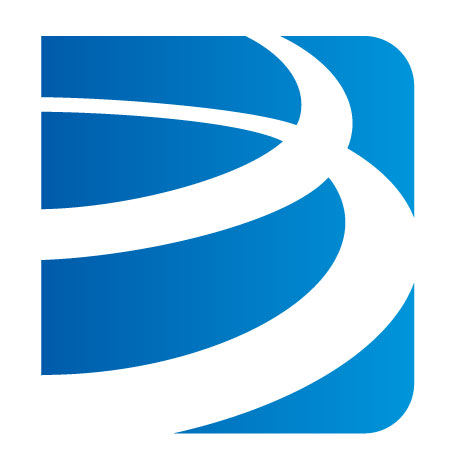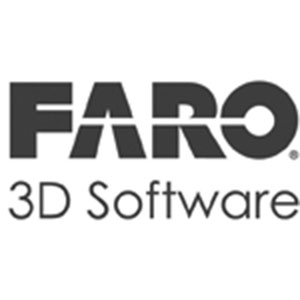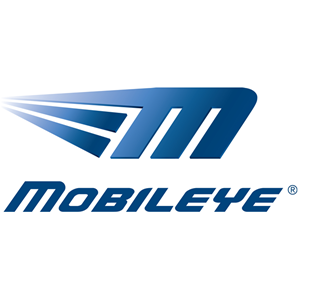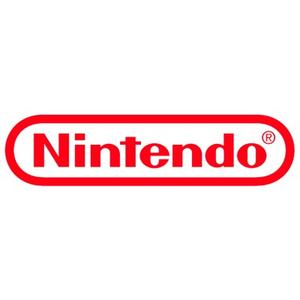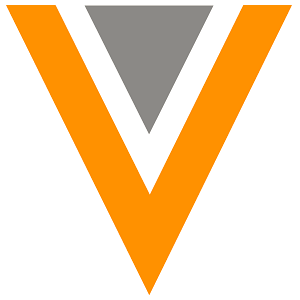Author: Ben Rose
Brooks Automation: Poised for Recovery?
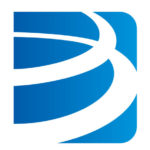 Is Brooks Automation poised to Participate in Industry Upswing?
Is Brooks Automation poised to Participate in Industry Upswing?
With trailing 12 month sales of $546 million, and a market cap of $680 million, Brooks Automation (NASDAQ: BRKS), based in Chelmsford Massachusetts, is a leading provider of automation equipment and services to the semiconductor, LED, and consumer electronics industries, which collectively account for 80 percent of sales. Life sciences accounts for the remainder, and is comprised of biological sample storage systems, consumables, and services, which leverage Brooks’ core competence in cryogenic and automated manufacturing equipment.
The cyclical semiconductor business remains Brooks’ largest and most profitable segment, where it serves over 200 OEM customers, including Applied Materials (NASDAQ: AMAT), Tokyo Electron (OTC: TOELY), Lam Research (NASDAQ: LRCX), and KLA-Tencor (NASDAQ: KLAC), who are in the midst of merger discussions. Brooks also conducts business directly with many of the leading semiconductor device makers, including Samsung, Toshiba, Intel (NASDAQ: INTC), Taiwan Semiconductor Manufacturing Company (NYSE: TSMC), and Micron (NASDAQ: MU). Over the last several months, Brooks has begun to see growing demand for its vacuum robots, and contamination and control solutions, which comprise about 40 percent of semi cap equipment sales.
Four years ago Brooks embarked on a strategy to divest non-core businesses, expand in the semiconductor equipment business, and diversify into life sciences, primarily through acquisition. Brooks Life Sciences parlays the company’s core competencies in cryogenics and automation into the cold storage, retrieval, and tagging of biological samples. Brooks has acquired five companies in the last four years, and the division now claims over 100 customers, including the top 20 drug and biotech companies.
The all-cash $128 million acquisition of privately-held, BioStorage Technologies, an Indiana-based provider of sample management services, was completed late last year. The business is on track to generate over $40 million revenue, and in doing so, has enabled the life sciences segment to achieve a $100 million annualized run rate, with services and consumables accounting for about 60 percent of the total. Though not yet profitable, Brooks Automation narrowed the operating loss in the segment to $2 million in the March 31 quarter, and with a recent restructuring, targets profitability by the end of the September quarter.
Three key swing factors will determine Brooks Automation’s fate over the coming year, specifically whether it:
- participates in the steady recovery of spending in the semiconductor industry, fueled by a resurgence in demand for front-end systems as OEMs and semiconductor customers shift their emphasis to 10 nanometer process technologies.
- achieves profitability in the Life Science segment through greater efficiency, execution, and a more predictable mix of consumables and services for cold storage samples.
- achieves operating margin expansion more broadly, as it concludes a number of cost reduction initiatives, and begins, at long last, to focus on organic, rather than acquisition-driven growth.
As Brooks confronts the above-mentioned challenges, the company provides investors with a degree of downside protection, given its historically strong free cash flow generation, a good balance sheet, with $68 million in cash, or $1.00 per share, no debt, a tangible book value of $3.61 per share, and a compelling valuation vis-à-vis its SMID cap peers in the semiconductor capital equipment business. The company also investors with a dividend, whose current yield is four percent.
Invested Partners makes bold move in tech sector
Far far away, behind the word mountains, far from the countries Vokalia and Consonantia, there live the blind texts. Separated they live in Bookmarksgrove right at the coast of the Semantics, a large language ocean. A small river named Duden flows by their place and supplies it with the necessary regelialia. It is a paradisematic country, in which roasted parts of sentences fly into your mouth.
FARO Technologies: Measuring for Success
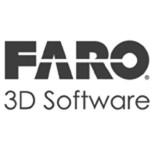 With trailing 12 month sales of $318 million, a market cap of $473 million, $150 million in cash and no debt, FARO Technologies is a leading provider of three-dimensional (3D) measurement and imaging devices. The Lake Mary Florida company has over 200 patents, and several hundred more pending on a global basis. The company’s patents will expire on a rolling basis between now and 2024.
With trailing 12 month sales of $318 million, a market cap of $473 million, $150 million in cash and no debt, FARO Technologies is a leading provider of three-dimensional (3D) measurement and imaging devices. The Lake Mary Florida company has over 200 patents, and several hundred more pending on a global basis. The company’s patents will expire on a rolling basis between now and 2024.
With roughly 15,000 customers and 30,000 product installations across the globe, FARO serves a prestigious customer base, which includes the leading OEM manufacturers in the automotive and aerospace markets, such as GM, Daimler, BMW, Volkswagen/Audi, Jaguar, Nissan, Boeing, the US Military, and Airbus. Importantly, FARO maintains a low level of customer concentration, and much of its business comes from second and third tier suppliers to OEMs in its key markets. For all of 2014, the company’s top ten customers accounted for less than five percent of sales. In the third quarter of 2015, the top five customers accounted for 6.2 percent of sales. In a typical quarter about 70 percent of sales come from the company’s installed base, while new customers contribute the remainder.
FARO Technologies is best known for its Arm product, which provides precise 3D measurement of mechanical objects, and has seen strong traction across most industrial verticals. FARO’s Focus laser scanner product, believed to be the company’s second strongest selling product, has achieved some success in industrial applications, but has been facing competitive pricing pressure more recently, particularly in the price sensitive architectural engineering and construction (AEC) vertical market, the laser scanner’s largest vertical. The company also offers the FARO Laser Tracker, a portable coordinate measuring machine for large volume 3D measurement.
FARO Technologies faces competition from a number of global competitors, including Hexagon AB of Norway, Trimble Navigation, Topcon, as well as other niche providers, such as Steinbichler of Germany. Current foreign exchange rate dynamics have emboldened FARO’s European competitors to attempt to gain market share, thus exploiting the relative strength of the US dollar.
We remain optimistic regarding FARO Technologies’ longer term growth prospects, despite currency headwinds and macro conditions that began to emerge in the first quarter of 2015. We are impressed by FARO’s solid technology and strong customer base, though 2015 has proven to be a transition year in which the company faced numerous market and foreign exchange challenges. During this period turnover in the company’s executive ranks has been significant, particularly in light of the recent resignation of the company’s long-standing and hard-charging CEO and president Jay Freeland.
That said, the company has announced an ambitious organizational and growth strategy under the leadership of interim CEO Dr. Simon Raab, who is also a company co-founder. Recently appointed CFO Laura Murphy brings significant operational experience to the company, with experience at Philips and Ford Motor Company. Despite its challenges, FARO retains an excellent balance sheet overall, with $150 million in cash, no debt, and re-purchased $23 million of its common stock in the fourth quarter, under a $41 million share repurchase authorization.
Galleries can be added to posts
Far far away, behind the word mountains, far from the countries Vokalia and Consonantia, there live the blind texts. Separated they live in Bookmarksgrove right at the coast of the Semantics, a large language ocean. A small river named Duden flows by their place and supplies it with the necessary regelialia. It is a paradisematic country, in which roasted parts of sentences fly into your mouth.
Mobileye: the Market Opportunity
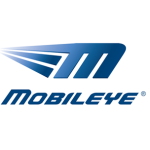 After decades of plodding along on autopilot, the automotive industry has awakened to embrace technology to advance the state of the art in driver and vehicle safety. Outside agitators led by Google, among the first to advance the idea of a driverless car, and Elon Musk of Tesla Motors, the creator of the first commercially viable electric car, have begun to pressure the automotive industry into revolutionizing vehicle manufacturing and driver safety.
After decades of plodding along on autopilot, the automotive industry has awakened to embrace technology to advance the state of the art in driver and vehicle safety. Outside agitators led by Google, among the first to advance the idea of a driverless car, and Elon Musk of Tesla Motors, the creator of the first commercially viable electric car, have begun to pressure the automotive industry into revolutionizing vehicle manufacturing and driver safety.
At stake, for starters, is the goal to dramatically reduce the number of road traffic deaths across the globe. Remarkably, the World Health Organization appears to be the only source of reliable data on this topic. It estimates that vehicle related deaths were 1.2 million, although the most recent year for which estimates are provided is 2010. In the US alone, traffic related deaths were an estimated 33,000 in 2014.
In the last few years an emerging category of driver safety, based on software, sensors, and microprocessors has come to be called Advanced Driver Assistance Systems (ADAS). Industry definitions are not yet uniform, but the category is generally thought to contain features for blind spot detection, lane departure and lane keeping, adaptive cruise control, parking assistance, forward collision protection, traffic sign recognition, and automatic emergency braking. Most of these capabilities alert the driver to take action, while some are semiautonomous in that the ADAS system takes over control of the car in order to avoid crashing into the car ahead, or hitting a pedestrian or bicyclist.
The target market for ADAS is comprised of the 35 or so largest vehicle manufacturers who collectively account for the lion share of the nearly 90 million motor vehicles produced each year. This definition includes passenger cars, light commercial vehicles, minibuses, trucks and buses. China was the largest manufacturer of such vehicles in 2014, with just under 24 million, while the US made just under 12 million vehicles in the same period.
According to data gathered by ReportLinker.com, eight percent of new vehicles were equipped with ADAS in Europe and the US, while less than two percent of cars made in Asia have begun to deploy ADAS. On a global basis by 2019, the figure is expected to rise to 25 percent.
Market participants are utilizing a variety of technologies to create ADAS products. These include radar, lidar, as well as camera-based approaches. Each approach has its strengths and weaknesses, depending on the application. Cost is another key concern, as the car industry is notorious for relentlessly pursuing cost reduction throughout the supply chain.
Demand for ADAS is being driven by a combination of standard setting organizations, government regulators, as well as the desire on the part of global car makers to differentiate their products to meet drivers’ demand for enhanced safety and convenience. This is a key point, since most ADAS functions available on the market today are sold as options, rather than as standard features. However, this is about to change.
In an effort to achieve the highest safety standards, varying levels of ADAS will be required to be deployed, beginning in the current year. The National Highway Traffic Safety Administration (NHTSA) is on record calling for the inclusion of assisted driving technology to shift focus from crash mitigation to crash prevention. The group intends to revamp its 5 star rating system to include ADAS, though it has not yet specified which technologies will be required to achieve a newly ascribed five star rating.
Noting that 47 percent of Europe’s 26,000 road deaths in 2014 involved car collisions with pedestrians, bicyclists, and motor cycles, Euro NCAP, a European trade association that applies safety ratings to European passenger vehicles, will add a safety rating for autonomous emergency braking (AEB) beginning in 2016. The group notes that most collisions take place when drivers fail to brake, or apply the car’s braking system too late. NCAP estimates that by utilizing autonomous emergency braking (AEB) technologies one in five collisions could be avoided.
Early indications are that AEB is challenging to implement. In June of 2015, Honda’s Acura luxury car group was forced to recall 48,000 MDX and RLX SUVs produced in 2014 and 2015 due to the vehicles applying AEB when an SUV braked for no apparent reason and caused a rear-end collision. The offending SUVs were evidently using a radar, rather than a camera-based system. Toyota Motors issued a recall of 31,000 Avalon and Lexus ES sedans in November of 2015, due to a faulty AEB system. Rather than addressing the problem through a software upgrade, the issue is sufficiently serious to warrant a complete disabling of the current system to be replaced with an entirely new one at a later date.
Another factor driving demand for ADAS is the race to create the first driverless car. This has animated industry participants to a new level of competition. Just as the race to cross the Atlantic by air was initially derided as scientifically unachievable, the notion of a fully autonomous vehicle has been similarly dismissed. Recently, however, the industry is moving in fits and starts to develop and deploy the first generation of driverless cars, which some believe could begin to hit the roads as early as 2020.
Easily add videos to posts
Far far away, behind the word mountains, far from the countries Vokalia and Consonantia, there live the blind texts. Separated they live in Bookmarksgrove right at the coast of the Semantics, a large language ocean. A small river named Duden flows by their place and supplies it with the necessary regelialia. It is a paradisematic country, in which roasted parts of sentences fly into your mouth.
Nintendo: Focusing on the Future
Based in Kyoto, Japan, Nintendo, loosely translated as “leave luck to him,” was founded by Fusajiro Yamauchi over 120 years ago in 1889. Nintendo’s modern era began when Hiroshi Yamauchi, a grandson of the founder, became president in 1950. Building on success in toys and games including its Ultra Machine and the Love Tester introduced in the mid-1960s, Nintendo later began to focus on home video consoles for color TVs in the mid-1970s. The company also began to develop its own games under the leadership of Shigeru Miyamoto, who remains the company’s visionary R&D chief. Under his influence, Nintendo created its most memorable and iconic characters, including Mario, Zelda, and Donkey Kong, a video game released in 1981.
In 1980, Nintendo launched the first in a series of hand-held gaming devices, and achieved critical acclaim with the introduction of the Game Boy in 1988. At the same time, the company continued to develop succeeding and successful generations of its hardware console devices, including the Nintendo Entertainment System (NES), which was launched in Japan in 1983 and in the US in 1985. NES bundled in various games, including the Super Mario Brothers, arguably Nintendo’s most iconic series, contributing to NES sales of over 60 million systems.
In 2002, after more than 50 years at the helm, Nintendo president Hiroshi Yamauchi, then aged 65, announced he would turn over the reins to 43 year-old Satoru Iwata, who had emerged from the ranks of Nintendo’s HAL Laboratory subsidiary to become the first non-family member to lead Nintendo. Two years later Nintendo introduced the Nintendo DS, its fourth major hand-held system, which featured a dual, touch screen, along with several successful game titles.
Shipped in time for the holiday season in 2006, Nintendo’s Wii became the most successful game system in the company’s history, ultimately selling over 100 million units, and catapulting the company’s stock to an all-time high of over 70,000 Yen per share on the Osaka Stock Exchange. The console featured relatively straight forward controls, including a remote control device to detect 3D movement, as well as internet connectivity, and the ability to run previous generation Nintendo games. The Nintendo Wii was the best-selling game console of its generation, decisively outselling both the Sony Playstation 3, as well as the Microsoft Xbox 360.
The Wii U, a successor to the Wii, shipped in the fall of 2012, and is generally considered to be among the more disappointing game consoles in the company’s history, inception to date selling nearly 11 million units as compared to over 100 million units for the Wii. The Wii U’s under-powered graphics, closed computer architecture, and paucity of third party game titles available at launch and afterwards, are considered to be among the leading causes of the product’s relatively mediocre performance.
Beginning in January 2014, following the announcement of a 30 percent contraction in profits during the prior nine months, Nintendo then president and CEO Satoru Iwata announced that he would take a 50 percent cut in pay, and that salaries of other key executives would be cut by 20-30 percent. In January of 2015, Nintendo announced its exit from the Brazilian games market.
In March of 2015 Nintendo began a strategic shift and announced that it would for the first time develop mobile games utilizing Nintendo characters for Apple and Android devices through an alliance with DeNA, a Japanese developer of mobile games. At the same time, Nintendo reaffirmed its commitment to dedicated gaming devices, with plans to launch a next-generation video game machine. Having staged a major turn-around in company profitability and performance, as well as a revitalization of the Nintendo brand, the company posted its first profitable fiscal year in several years for the period ended March 31, 2015.
Nintendo continues to maintain very high market share in the handheld device and game category, led by its 3DS platform which currently accounts for about 60 percent of sales and may hold as much as 80 percent of the dedicated market for hand-held gaming devices. In the last year, the company recently launched refreshes of these products in Japan, the US and in Europe, and will launch new software titles for the devices in the coming year. In addition, Nintendo is benefitting from new software titles for the Wii U platform, such as Splatoon, as well as amiibo action figure toys, based on characters from its games, which have been an important tie in to its 3DS and Wii console devices.
We see Nintendo working on three key initiatives to drive growth:
- Development of sequels and new games for the 3DS and Wii U platforms.
- Creation of a next generation “brand new” concept video game device, code-named NX;
- Mobile games for Apple and Android devices that incorporate elements of social networking as well as draw upon its extensive library of video game characters.
Over the last number of generations Nintendo has developed a remarkably creative and collegial corporate culture. For this reason, Tatsumi Kimishima, a Nintendo managing director, who was recently appointed president of the company, will play a key role. Mr. Kimishima replaces Satoru Iwata, Nintendo’s highly-respected president who passed away in July after battling an illness for several years. Iwata led the company through its greatest era of achievement during which the Wii U sold over 100 million units, and more recently developed the company’s mobile strategy.
After having been personally recruited by Nintendo’s legendary Hiroshi Yamauchi 16 years ago to become CFO of the Pokemon Company, a Nintendo affiliate, Mr. Kimishima, now age 65, went on to become president of Nintendo of America, the company’s largest division, in a relatively short time period. In addition to having been a member of the company’s board of directors prior to his appointment as president, he was also one of only a few managing directors, and recently held the position of head of human resources. Prior to joining Nintendo, he spent 27 years with Sanwa Bank, now a part of the Bank of Tokyo.
Our sense is that while Kimishima may lack the technological depth of his predecessor, and may not have the creative talent of several of Nintendo’s key leaders, his understanding of the company’s corporate culture, deep knowledge of Nintendo’s creative games and operations experience as head of Nintendo of America, gives him a unique perspective to manage the company during this crucial time in the company’s history.
Hello world!
Welcome to WordPress. This is your first post. Edit or delete it, then start writing!
Veeva Systems: Taking the Cloud to Life Sciences
 With projected calendar 2015 sales of $410 million and a market cap of roughly $3.3 billion, Veeva Systems is a leading provider of cloud software for salesforce automation, content management, and sales contact data to the global life sciences industry. Based on an exclusive software license from salesforce.com (NYSE: CRM), Veeva’s CRM software is now utilized by 17 of the top 20 largest pharmaceutical and biotech companies, including eight of the top 10. Within the top 20, only three have thus far not made the switch to Veeva: Switzerland-based Roche Holding, France-based Sanofi, and France-based Novo Nordisk, which ranks in the top 15.
With projected calendar 2015 sales of $410 million and a market cap of roughly $3.3 billion, Veeva Systems is a leading provider of cloud software for salesforce automation, content management, and sales contact data to the global life sciences industry. Based on an exclusive software license from salesforce.com (NYSE: CRM), Veeva’s CRM software is now utilized by 17 of the top 20 largest pharmaceutical and biotech companies, including eight of the top 10. Within the top 20, only three have thus far not made the switch to Veeva: Switzerland-based Roche Holding, France-based Sanofi, and France-based Novo Nordisk, which ranks in the top 15.
Veeva has identified an annual market spend of over $5 billion in software for CRM, content management, and sales data, and so it has much running room ahead. Veeva has already captured an estimated 50 percent of the CRM market for pharma and biotech, and could very well capture as much as 60 percent of the market over the next several years, as the company continues to roll out new seats to existing customers, and sell additional CRM add-on modules.
Since Veeva is cloud-based, and features a multi-tenant architecture, the company can update the software of its entire customer base at the same time, reducing the time, aggravation, and cost associated with maintaining and updating several versions of the same software program. Veeva’s cloud-based product set stands in contrast to two of its largest competitors, Oracle (NASDAQ: ORCL), and IMS Health Holdings (NYSE: IMS), which support and maintain several software packages simultaneously, many of which have been developed for older client server computer systems, and are not hosted in the cloud. Support for these older software products detracts from keeping their cloud products up to date, which will likely lead to further market share erosion.
Veeva’s newer products for content management and sales data, respectively, accounted for less than 10 percent of sales a year ago, but now account for about 20 percent of product sales. These products carry slightly higher gross margins than the company’s CRM products, and more than double its addressable market. Veeva has additional room to sell Veeva CRM, Veeva Vault, and Veeva Network to existing and new customers, as well as to sell the new products to other segments in the life sciences market, such as medical devices, laboratory instruments, and CROs—segments with which the company conducts limited business currently.
Veeva benefits from an experienced management team, led by Peter Gassner, a former SVP of Technology at saleforce.com, and at Peoplesoft (later acquired by Oracle), where he was Chief Architect and General Manager for PeopleTools, and at IBM Silicon Valley Lab, where he participated in database research and development. Matt Wallach, co-founder and President, was formally GM of the Pharmaceuticals and Biotechnology division of Siebel Systems (later acquired by Oracle). CFO Tim Cabral has held financial management positions at Peoplesoft and other technology companies. Detailed knowledge of the specific needs of the pharma and biotech segments, gives Veeva a leg up over its competitors, many of whom have only general knowledge of the life sciences sector.
Veeva has a strong balance sheet, which features $438 million in cash and no debt, and continues to generate very solid cash flow, all the while growing the business, while running at a 30 percent operating margin in the most recent quarter.
- ‹ Previous
- 1
- 2
- 3
- 4

